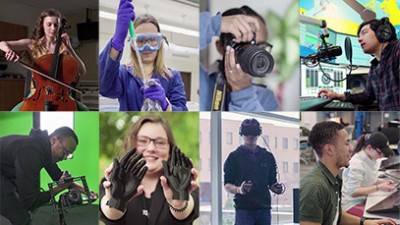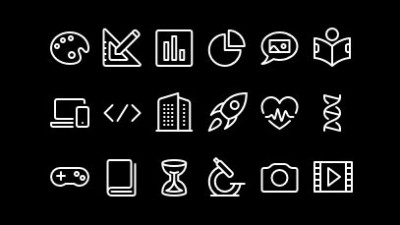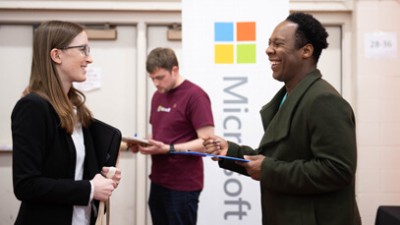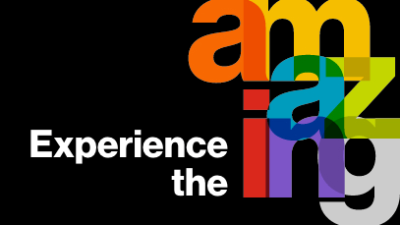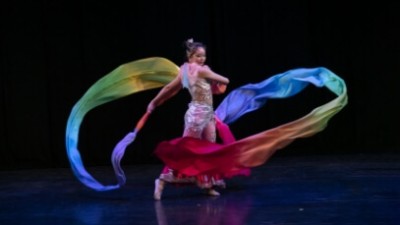From concept to creation: How AI is shaping the future of art in digital Hollywood
Provided
Shaun Foster, professor and program director in RIT's 3D digital design program, recently attended Digital Hollywood: The AI Summer Summit and shares his insights.
Attending the Digital Hollywood session was a remarkable experience, filled with insightful discussions and innovative ideas about the future of Al in the creative industry. Shaun Foster, professor and undergraduate program director of 3D digital design in RIT's School of Design and a Generative Al Fellow, found the conversations both enlightening and inspiring. Here are some key takeaways from the session.
The evolution of Al in creative processes
One of the major themes of the panel was Al's transformative power in enhancing creative processes. Tools like MidJourney, Stable Diffusion, and OpenAl's GPT models are revolutionizing how artists and creators generate content. However, the consensus among the panelists was clear: while these tools are powerful, they often require customization to meet specific artistic needs. AI engineering expert Hassan Farhat highlighted how his team developed specialized frameworks to achieve desired results, reducing the guesswork involved in using generic models.
Generative Al and real-time 3D
In my own work at RIT, I've been exploring the intersection of generative Al and real-time 3D creation. This involves using Al to generate preliminary models and environments, which can then be refined and customized by human artists. This approach not only speeds up the creative process but also opens up new possibilities for rapid iteration and experimentation. As I mentioned during the session, the ability to reach an 80% quality level quickly is a game changer, allowing artists to focus their efforts on the final 20% where their unique creative touch makes the most difference.
Collaboration and democratization
A recurring theme was the potential of Al to democratize content creation. Rachel Joy Victor emphasized how Al tools enable individuals without traditional artistic skills to visualize and create their ideas. This democratization is empowering a new generation of "prompt artists" who can use language and Al to generate compelling visuals and narratives. This is particularly exciting for educational settings, where students can experiment with these tools to bring their visions to life.
Challenges and ethical considerations
Despite the enthusiasm, there were also discussions about the challenges and ethical implications of Al in the creative industry. One concern is the potential for homogenization of artistic styles, as many Al-generated images tend to look similar due to the nature of their compensation to creators whose work is used to train these models. Ensuring that artists retain control over their intellectual property and are fairly compensated is crucial for the sustainable development of Al technologies.
Future directions
Looking ahead, panel moderator and founder of Showdog Studio, John Attard, reiterated that the integration of Al into the creative pipeline is going to continue to evolve. There is potential for even greater collaboration between Al and human creators, with Al handling repetitive and time-consuming tasks, allowing artists to focus on higher-level creative decisions. The development of smaller, specialized models, as advocated by Hassan Farhat, could lead to more tailored and efficient workflows.
Moreover, the combination of Al with other emerging technologies like virtual reality (VR) and augmented reality (AR) promises to further expand the horizons of what is possible in digital content creation. The ability to create immersive, interactive experiences will open up new avenues for storytelling and audience engagement.
The evolution is real
The Digital Hollywood session underscored the incredible potential of Al to transform the creative industry. While there are challenges to address, the opportunities for innovation and democratization are immense. As we continue to explore and refine these technologies, it is essential to keep ethical considerations at the forefront and ensure that the benefits of Al are accessible to all creators.
Attending this session has reaffirmed my belief in the importance of integrating Al into creative education and practice. At RIT, we will continue to push the boundaries of what is possible, preparing the next generation of artists and technologists to thrive in this exciting new landscape.
